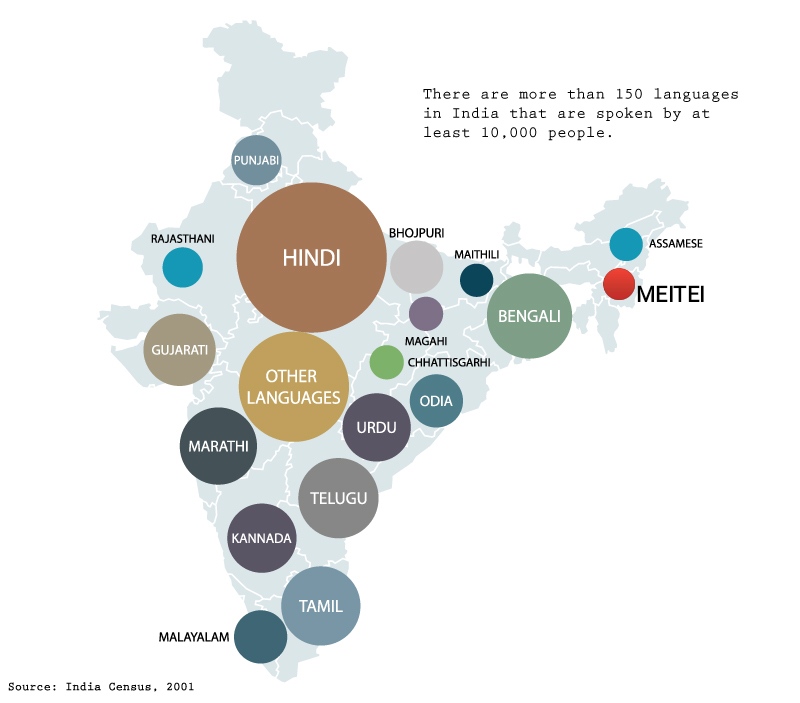Unicode: Devanagari अ
Devanagari is an alphabet used by several languages in India. The most popular one that use Devanagari is Hindi. (younger generation uses English alphabet for writing Hindi.)
- Indian gov recognize 22 languages.
- Indian has 30 languages each spoken by more than a million native speakers.
- Indian has 122 languages each spoken by more than 10,000 people.
- English is also an official language of India, but is only spoken by 30% of people. And less than 0.1% as first language.

Devanagari
ऄ अ आ इ ई उ ऊ ऋ ऌ ऍ ऎ ए ऐ ऑ ऒ ओ औ क ख ग घ ङ च छ ज झ ञ ट ठ ड ढ ण त थ द ध न ऩ प फ ब भ म य र ऱ ल ळ ऴ व श ष स ह
क़ ख़ ग़ ज़ ड़ ढ़ फ़ य़ ॠ ॡ
ॲ ॳ ॴ ॵ ॶ ॷ ॸ ॹ ॺ ॻ ॼ ॽ ॾ ॿ
। ॥ ॰ ॱ
ꣲ ꣳ ꣴ ꣵ ꣶ ꣷ ꣼ ऽ
꣸ ꣹ ꣺ ꣻ
- 🕉 → Om symbol. (a sacred hum)
- ॐ → Om. (a sacred hum)
- ꣽ → Jainism Om symbol.
digits
०
१
२
३
४
५
६
७
८
९
Devanagari (/ˌdeɪvəˈnɑːɡəri/ DAY-və-NAH-gər-ee; देवनागरी, IAST: Devanāgarī, Hindi pronunciation: [deːʋəˈnaːɡəri]), also called Nagari (Nāgarī, नागरी), is a left-to-right abugida (alphasyllabary), based on the ancient Brāhmī script, used in the Indian subcontinent. It was developed in ancient India from the 1st to the 4th century CE, and was in regular use by the 7th century CE. The Devanagari script, composed of 47 primary characters including 14 vowels and 33 consonants, is one of the most adopted writing systems in the world, being used for over 120 languages. The ancient Nagari script for Sanskrit had two additional consonantal characters.
Among the languages using it – as either their only script or one of their scripts – are Hindi, Sanskrit, Pali, Awadhi, Bhojpuri, Braj Bhasha, Chhattisgarhi, Haryanvi, Magahi, Nagpuri, Rajasthani, Bhili, Dogri, Marathi, Nepali, Maithili, Kashmiri, Konkani, Sindhi, Bodo, Nepalbhasa, Mundari and Santali. The Devanagari script is closely related to the Nandinagari script commonly found in numerous ancient manuscripts of South India, and it is distantly related to a number of southeast Asian scripts.
[2019-03-04 Wikipedia]
